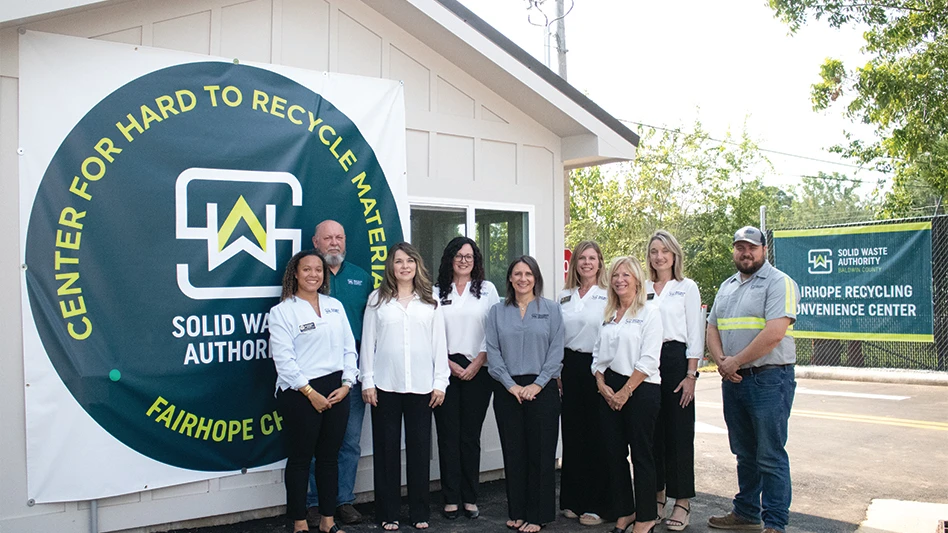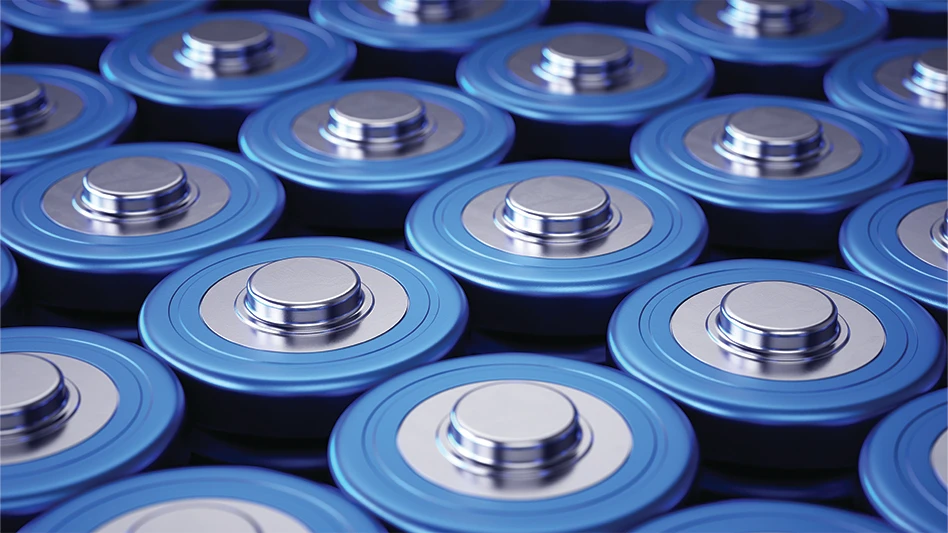
A joint study, “The Global E-Waste Monitor 2017,” released by the International Solid Waste Association (ISWA), Vienna; United Nations University (UNU), Tokyo; and the International Telecommunication Union (ITU), Geneva, reports that 44.7 million metric tons of electronic scrap were generated globally in 2016, an increase of 3.3 million metric tons, or 8 percent, from 2014.
“E-waste” is defined in the report as anything that has a plug or battery.
In 2016 the global generation of electronic scrap from end-of-life refrigerators and TV sets to solar panels, mobile phones and computers was equal in weight to 1.23 million fully loaded 18-wheel 40-ton trucks, enough to form a line 28,160 kilometers (17,500 miles) long, the distance from New York to Bangkok and back, ISWA says.
The report foresees a further 17 percent increase—to 52.2 million metric tons of obsolete electronics by 2021—the fastest growing part of the world’s household discarded materials stream.
ISWA President Antonis Mavropoulos says, “We live in a time of transition to a more digital world, where automation, sensors and artificial intelligence are transforming all the industries, our daily lives and our societies. E-waste is the most emblematic byproduct of this transition and everything shows that it will continue to grow at unprecedented rates.”
He continues, “Finding the proper solutions for e-waste management is a measure of our ability to utilize the technological advances to stimulate a wasteless future and to make circular economy a reality for this complex waste stream that contains valuable resources.”
Of the electronic scrap generated in 2016, 20 percent is documented as having been collected and recycled, according to the report. This is “despite rich deposits of gold, silver, copper, platinum, palladium and other high-value recoverable materials. The conservatively estimated value of recoverable materials in last year’s e-waste was US$55 billion, which is more than the 2016 gross domestic product (GDP) of most countries in the world,” ISWA indicates in a news release about the new study.
About 4 percent of 2016’s discarded electronics is known to have been thrown into landfills; 76 percent, or 34.1 million metric tons, likely ended up incinerated, in landfills, recycled in informal (backyard) operations or remains stored in our households, ISWA states.
Jakob Rhyner, vice rector, UNU, adds, “The world’s e-waste problem continues to grow. Improved measurement of e-waste is essential to set and monitor targets and identify policies. National data should be internationally comparable, frequently updated, published, and interpreted. Existing global and regional estimates based on production and trade statistics do not adequately cover the health and environmental risks of unsafe treatment and disposal through incineration or landfilling.”
On a per capita basis, the report shows a rising trend as well. Falling prices now make electronic and electrical devices affordable for most people worldwide while encouraging early equipment replacement or new acquisitions in wealthier countries. As a result, the average worldwide per capita e-scrap generated was 6.1 kilograms (13.4 pounds), up 5 percent from 5.8 kilograms (12.8 pounds) in 2014.
The highest per capita electronic scrap generators (at 17.3 kilograms, or 38 pounds, per inhabitant) were Australia, New Zealand and the other the nations of Oceania, with only 6 percent formally collected and recycled.
Europe, including Russia, is the second largest generator of e-scrap per inhabitant, with an average of 16.6 kilograms (36.5 pounds) per inhabitant. However, Europe has the highest collection rate at 35 percent.
The Americas generate 11.6 kilograms (25.5 pounds) per inhabitant and collect 17 percent, the report says, comparable to the collection rate in Asia at 15 percent. However, at 4.2 kilograms (9.2 pounds) per inhabitant, Asia generates only about one-third of America’s e-scrap per capita, the report shows. Africa, meanwhile, generates 1.9 kilograms (4.2 pounds) per inhabitant, with little information available on its collection rate.
“We are very proud to have played an important role in this ground-breaking E-Waste monitor,” ISWA says.
The report calls for stepped-up global efforts to better design components in electrical and electronic equipment to facilitate reuse and recycling, greater capture and recycling of old equipment and better tracking of e-scrap and the resource recovery process, says UNU.
UNU continues, “Encouragingly, more countries are adopting e-waste legislation. Today 66 percent of the world’s people, living in 67 countries, are covered by national e-waste management laws (up from 44 percent in 61 countries in 2014)—an increase caused mainly by India’s adoption of legislation last year.”
UNU points out that 41 countries quantify their electronic scrap generation and recycling streams officially and “the fate of a large majority of e-waste (34.1 of 44.7 metric tons) is simply unknown.”
The study says, “Having a national e-waste management regime in place does not always correspond to enforcement and setting the measurable collection and recycling targets essential for effective policies.”
Meanwhile, UNU says the type of electronic scrap covered by legislation differs considerably throughout the world, highlighting the need for “harmonization.”
“Without better statistics on e-waste, and closing the main data gaps of current e-waste statistics, it is impossible to measure the effectiveness of existing and new legislation to show any potential improvements in the future” the report says.
The groups involved in the publication of The Global E-Waste Monitor 2017 study describe it on its website as providing “the most comprehensive overview of global e-waste statistics and an unprecedented level of detail, including an overview of the magnitude of the e-waste problem in different regions. The report includes up-to-date information on the amounts of e-waste generated and recycled, makes predictions until 2021 and provides information on the progress made in terms of e-waste legislation. The e-waste volumes are indicative of the recycling industry’s potential to recover secondary resources, as well as setting environmental targets for detoxification. The report highlights the need for better e-waste data and information for policymakers to track progress, identify the need for action, and to achieve sustainable development, including the sustainable development goals (SDGs).”
In a separate press release, Itronics Inc., Reno, Nevada, reports the study shows $22 billion of gold (500 metric tons or 16 million troy ounces) were thrown away worldwide in electronic scrap in 2016.
Itronics says that, according to the World Gold Council, 146.9 million troy ounces of gold (4,571 metric tons) were produced worldwide in 2016. About 70 percent, or 104 million ounces, were mined, and about 30 percent, or 42 million ounces, were recycled. In 2016 the amount of gold thrown away in e-scrap worldwide was equal to 15 percent of world mine production, which is “a very significant amount of loss,” the company says.
Get curated news on YOUR industry.
Enter your email to receive our newsletters.
Latest from Recycling Today
- Dow, Mura Technology cancel chemical recycling plant in Germany
- Brightmark, Lewis Salvage partnership processes 1M pounds of medical plastics
- US paper recycling rate, exports down in '24
- Century Aluminum to restart idled production at South Carolina smelter
- Teaching kids the value of recycling
- ELV Select Equipment, Reworld aid NYPD in secure firearm disposal
- Some observers fear plastics treaty talks veering off course
- Advanced Polymer Recycling acquires TKO Polymers






